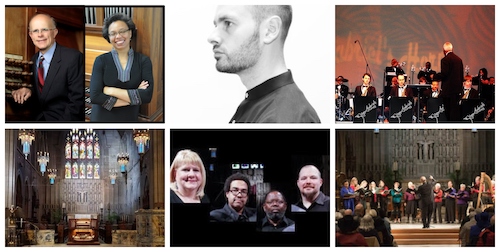by Jarrett Hoffman

NEWS BRIEFS:
Trinity Cathedral has announced its Fall BrownBag Concert Season. Todd Wilson and Nicole Keller open the series on October 6, when they’ll unveil the Cathedral’s new Muller Pipe organ. Next is Nathan Carterette with music reinvented for solo piano from other genres, followed by the big band Gabriel’s Horns, music for organ and brass quintet, “Jazzy Christmas,” Britten’s A Ceremony of Carols, and Handel’s Messiah. Details here.
And through October 1, the Cleveland Uncommon Sound Project is taking applications — both performance proposals and, new this year, proposals for lectures, interactive workshops, and presentations — for the next edition of the new and experimental music festival Re:Sound, which will run from June 9-12, 2022. Check out their proposal guidelines here, and apply here.
TODAY’S ALMANAC:
One challenge in our almanac is balancing between musicians who are already well-known, and those who deserve better when it comes to legacy.
Today, in an effort to “open the floor,” I decided to simply reach into the bowl of August-30th-music-history and scoop out a handful of names. Several of these musicians I had never heard of, but all proved impressive or delightful to learn about.
We start back in 1767, when composer, pianist, and music editor Christian Friedrich Gottlieb Schwencke was born in Wachenhausen, in the Hartz mountains of Germany. An early publisher of J.S. Bach’s The Well-Tempered Clavier, Schwencke is one of those lucky people whose name lives on as an adjective. That’s because a manuscript he made of that work’s first Prelude in C major contains the so-called “Schwencke measure,” which might in fact be of his authorship rather than Bach’s. For those curious, delve into this blog entry from G. Henle Verlag.
Into the 19th century we go — first to 1820, when George Frederick Root was born in Sheffield, Massachusetts. And then to the Civil War, when Root (who was also a pioneer in American music education) found fame through his patriotic songs, such as Battle Cry of Freedom, which advocated for abolitionism and preservation of the Union, and which provided a strong boost of morale among troops. That song was so popular that it was adapted for use by the Confederacy, and used in several political campaigns. Not to mention its inclusion in many modern contexts, such as that linked recording from the film Lincoln.
On to 1887, when pianist Yolanda Mero was born in Budapest, before moving to the U.S. in 1900. On these shores, she played concertos under Mahler and Stokowski, created several piano rolls, co-founded the New Opera company (becoming the world’s only female impresario at the time), railed against the presence of soap operas and ads on the radio (founding and chairing the Women’s National Radio Committee), and co-founded the Musicians Emergency Fund to support destitute musicians. She plays Liszt’s Hungarian Rhapsody No. 4 here.
Many women in music history have had their careers held back either by societal pressure, or in particular by the men in their lives. Such was the case with Kate Fanny Loder, who died on this date in 1904 in Headley, Surrey, England — after marriage, her husband insisted she give up her performing career as a pianist. Before that, she had already become the first female professor of harmony at the Royal Academy of Music, at age 18. And by the end of her life she had put together an oeuvre highlighted by several short works for piano, including the splendid Voyage Joyeux in A, heard here in an all-Loder album played by Ian Hobson.
In the space between composition and performance lies improvisation, a skill which brought special renown to organist and composer Piet Kee, who was born on this date in 1927 in Zaandam, Netherlands. For him, kicking off an international performing career was as simple as winning first prize at the Haarlem International Improvisation Competition three years in a row, 1953-1955. Watch footage of a short improvisation of his at the 1738 Christian Müller organ in St. Bavo in Haarlem here.
We’ll end on probably the most famous name in our almanac today, and someone who brings along with him a connection to Northeast Ohio: composer David Maslanka was born on August 30, 1943 in New Bedford, Massachusetts, and graduated from Oberlin Conservatory in 1965. A three-time winner of the National Endowment for the Arts Composer Award (1974, 1975, 1989), his writing lies in many genres — chamber music, choral, orchestral — but he is best-known for his works for wind ensemble. Among his pieces that are firmly established in the canon is the Symphony No. 4, performed here by the wind symphony of the University of Cincinnati College-Conservatory of Music, led by Kevin Michael Holzman.


